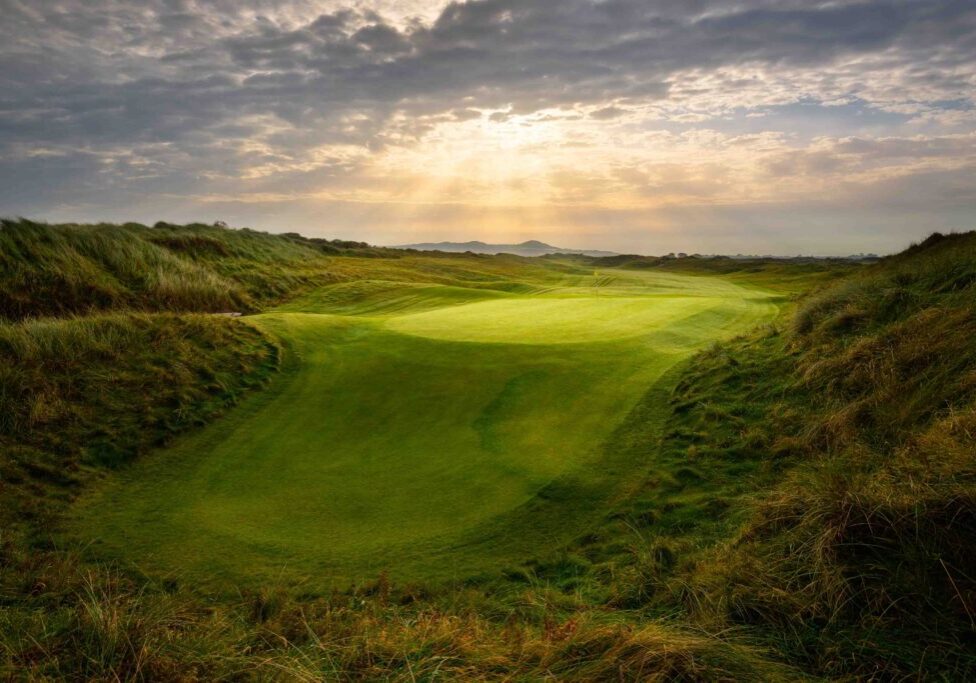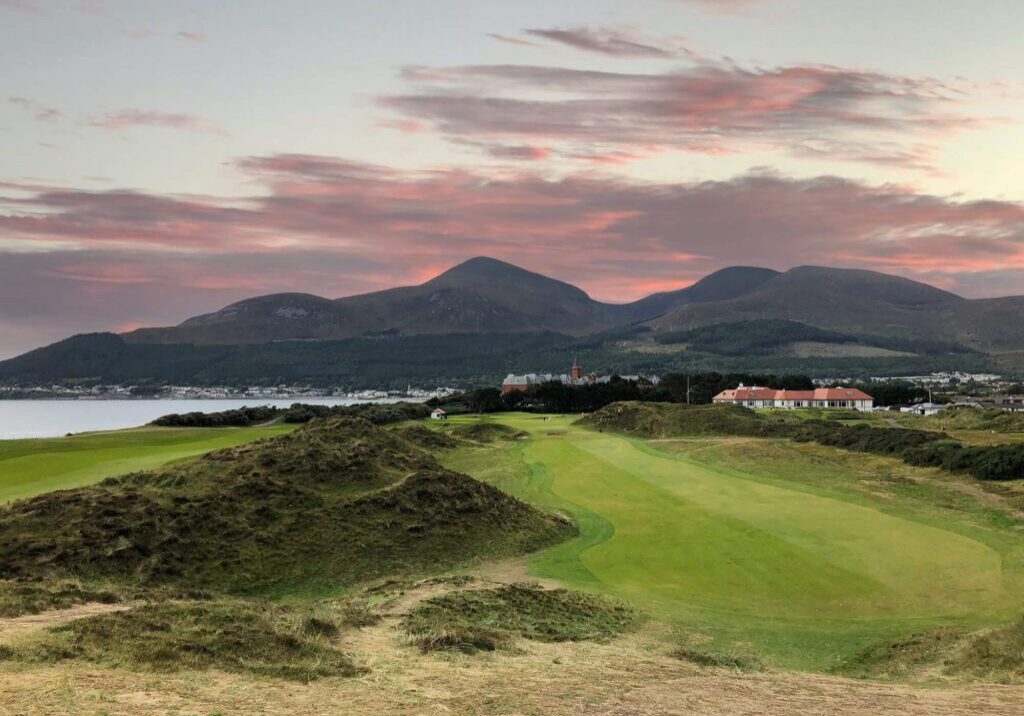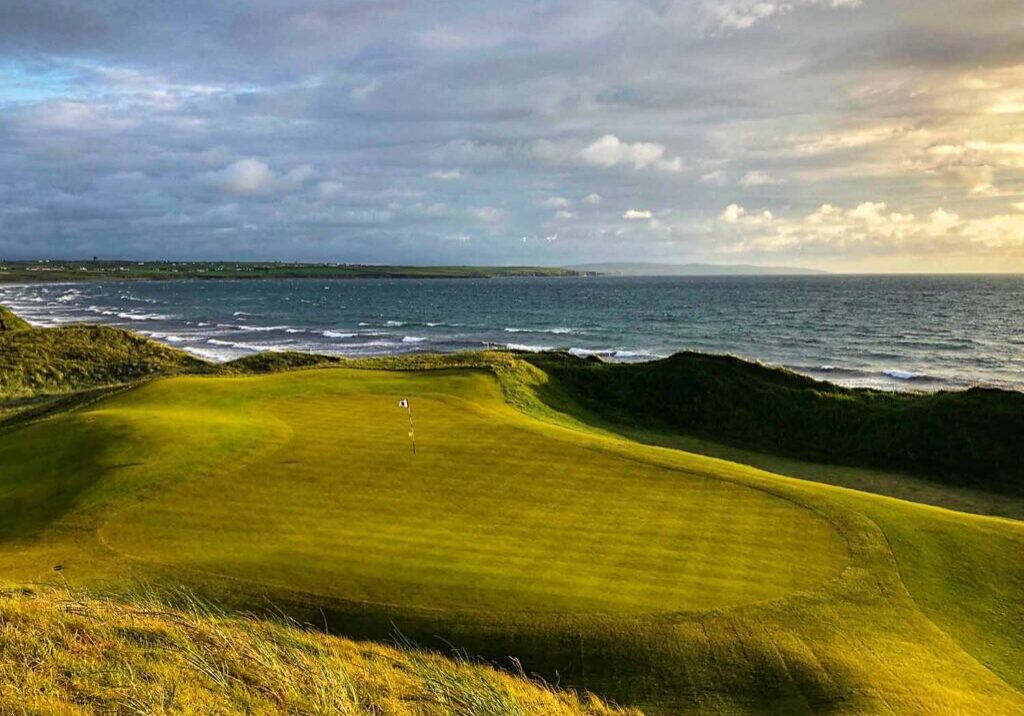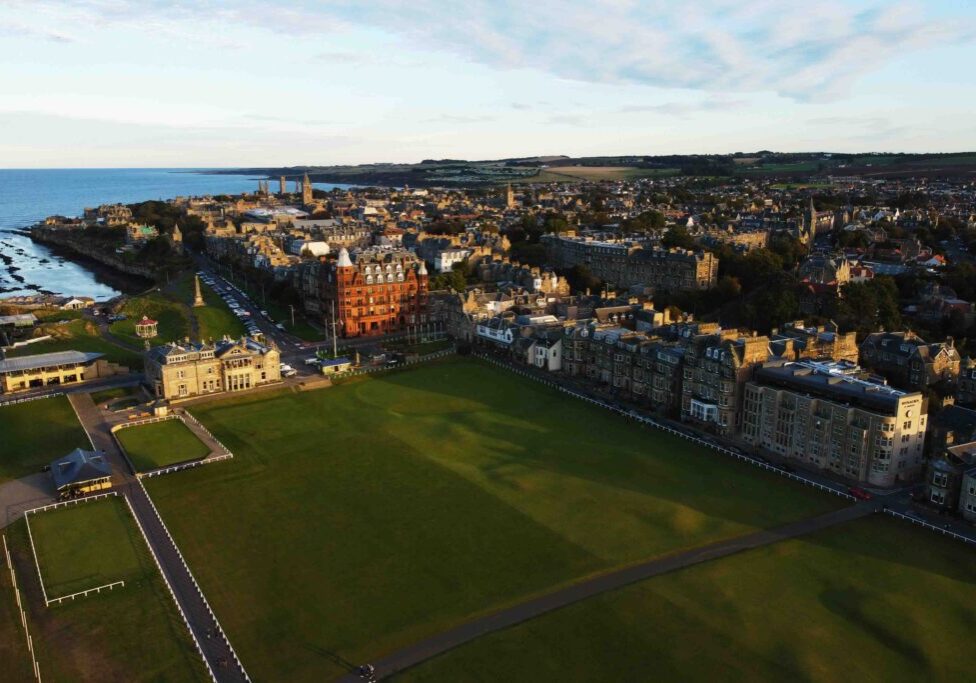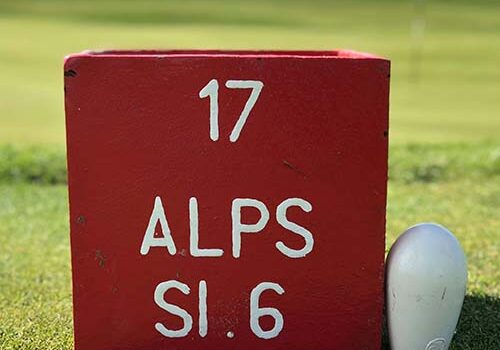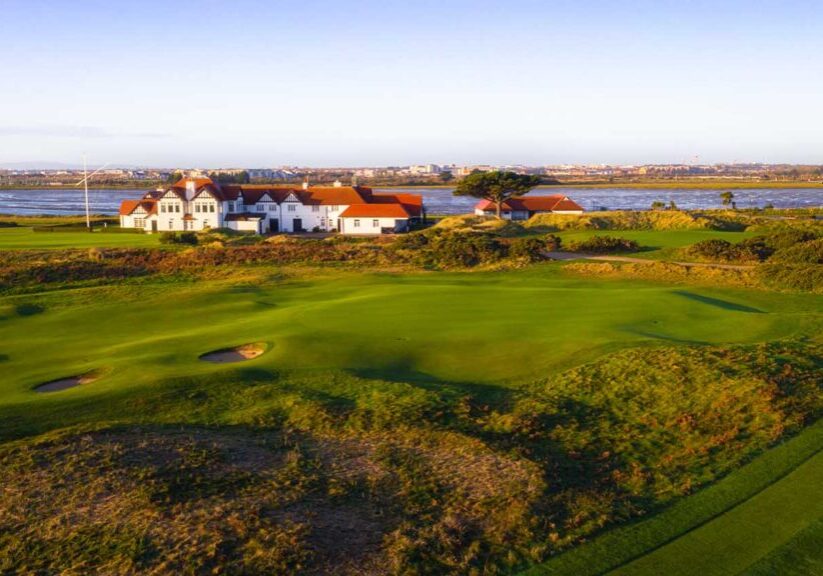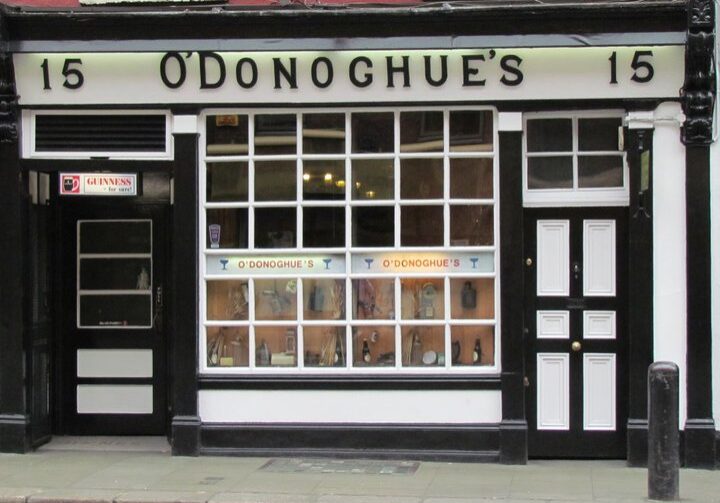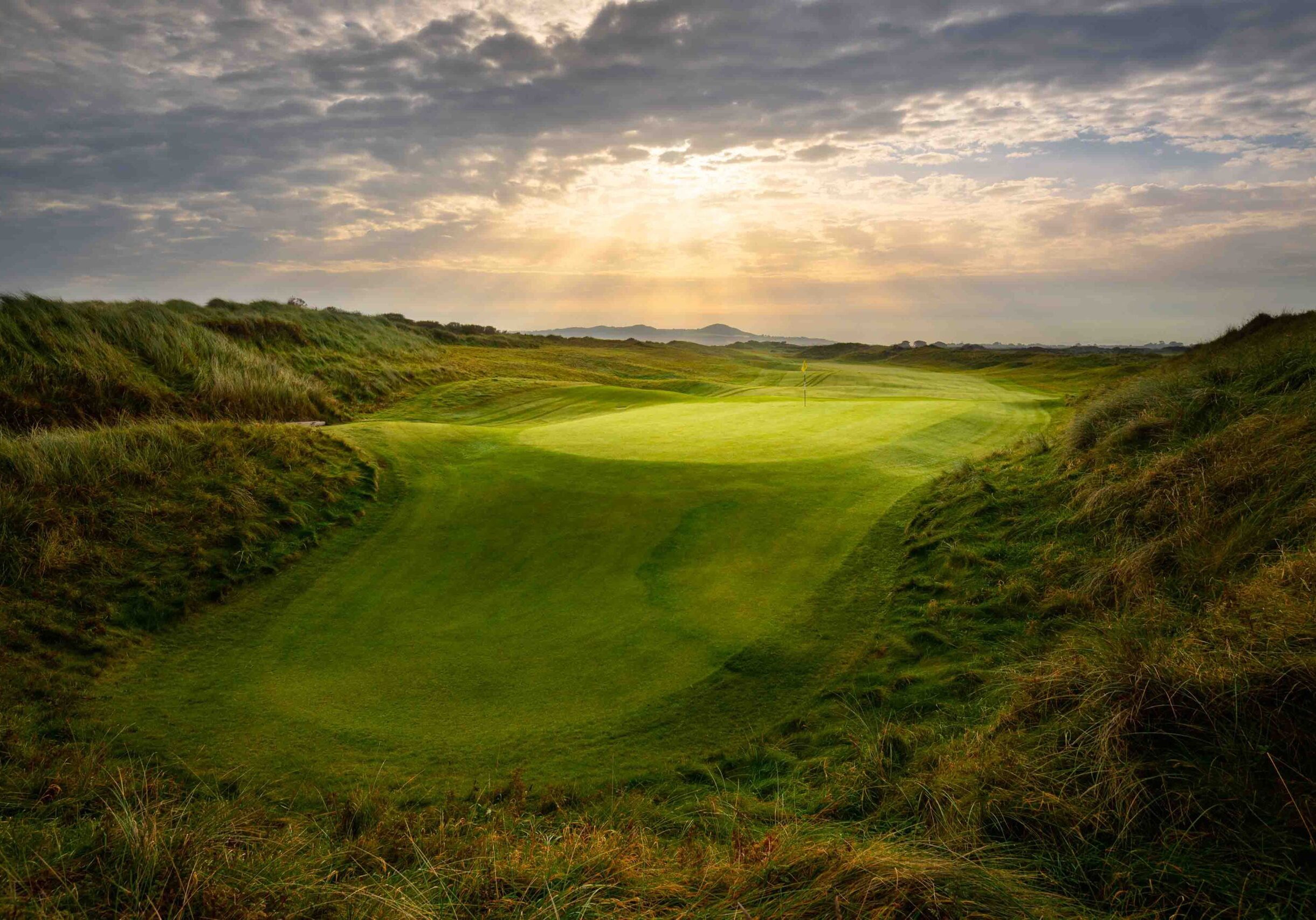
The Best Golf Near Dublin
Must-Play Courses Around Ireland's Capital
There was a time during the early years of our business when most of our travelers planned their Scotland or Ireland golf trips with the view that they'd never return. Because of that, they asked us to create travel plans which permitted them to play as many of the very best courses in each country as possible within a week. The result was often four hotel stands of two nights each, 36 holes most days, lots of driving about and very little good life. "Rather like a bit of death march" as the Major called these itineraries.
Today, it's just the reverse. Most begin their planning process with the notion that this is just their first bite of the apple and, if they like it, they'll be returning again and again. Consequently, they ask us to plan only a couple of hotel stops--three at most, less time on the coach, more time on the courses and in the pubs. They visit one or two regions--three at most, play the world ranked courses in each then play the best of the rest.
The Dublin area is a destination that fits these criteria quite well in that it is home to two world ranked courses and at least a half dozen or more other courses worthy of play if you have the time. One accommodation, ten different courses ranging from good to great, plus plenty of time to enjoy the best pubs in Dublin. Perfection!
The golf headliners are Portmarnock Golf Club and the European Club, both in the Golf Digest World Top 100. The local parkland gems are the K Club which hosted the 2006 Ryder Cup and 2016 Irish Open, Killeen Castle which hosted the 2011 Solheim Cup and Irish Open hosts Carton House and Druid's Glen. Then there are these four authentic seaside links which join Portmarnock as the primary attractions for Dublin golf trips:
County Louth (Baltray) Golf Club
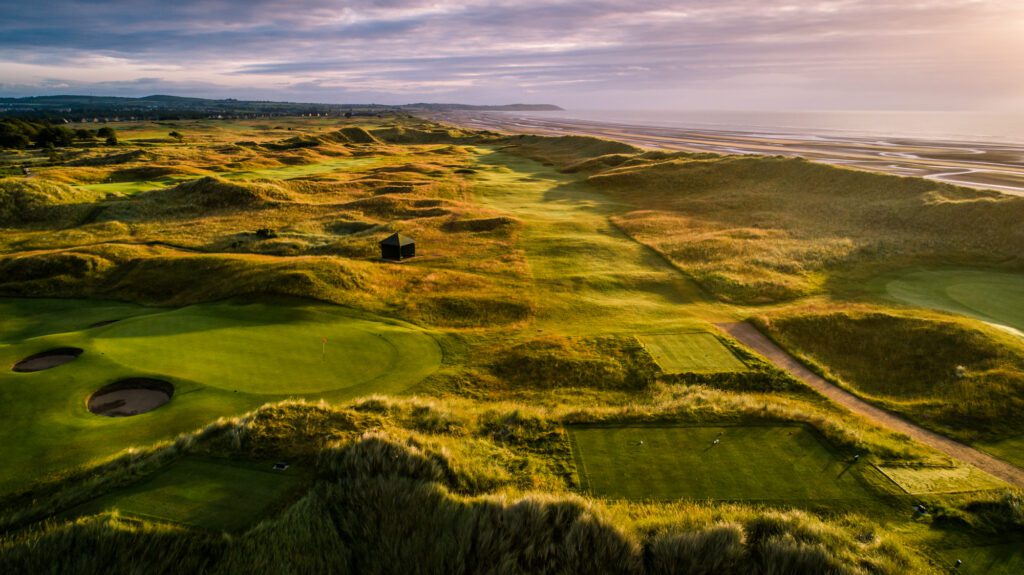
Situated at the mouth of the River Boyne as it flows from Drogheda into the Irish Sea near Baltray, it would be difficult to find a better golfing site than County Louth Golf Club. While the origins of the Club date from a meeting in October of 1892, the current championship links owes its existence to the mid 1930s work of Tom Simpson. Though he is little known in the States, Simpson’s contributions to marvelous seaside golf include Muirfield, Royal Porthcawl in Wales, the Old Course at Ballybunion and the wonderful figure eight design at Cruden Bay in the Scottish Highlands. He was also associated with Sunningdale, the famed heathland complex in suburban London.
The 1st is a difficult dogleg opening hole but I find the meat of the course begins with number three, as good a par five as one could hope to find. Those attempting to reach in two are confronted with beautifully natural humps protecting a smallish green. The shot falling short is pitched into treacherous rough, perhaps never to be struck again. Gauging the wind on holes five through eight is especially challenging as Simpson laid them out in four completely different directions. To me, the most scenic and best consecutive holes on the course are numbers 12 through 15. These two longish par fours, a devilish short four and an interesting three play amid some of the most rugged dunes on the property. They are followed by three excellent and difficult finishing holes.
The Island Golf Club
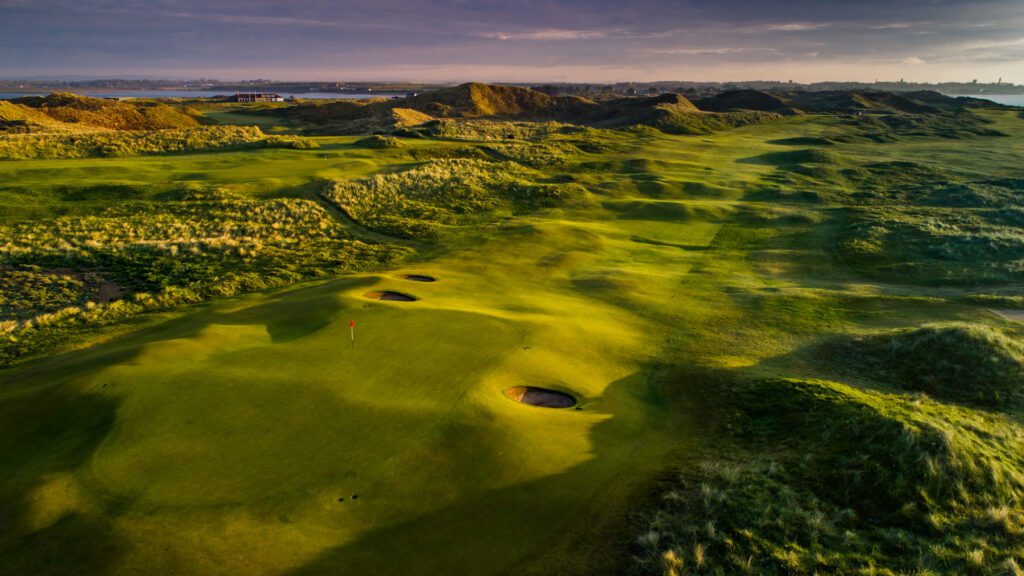
The best course in Ireland that you've never heard of. Play it, and tell no one. ~Bernard Darwin
With apologies to the great Bernard Darwin, we simply can not abide by his instructions. The Island Golf Club is a true delight that every golf traveler should experience in Ireland. There are no weak holes here. Situated midway between the Dublin Airport and the better known links of Portmarnock and Royal Dublin, it could be said that the Island is hidden in plain sight. This relative obscurity is no doubt due in part to the course being accessible only by boat (clever name, The Island) for the first 75 years of its existence and having only ten members prior to the 1940s. Today there is an access road, a large local membership and a modicum of visiting golfers. The Island also served as co-host of the 2019 Amateur Championship.
Most visitors are pleasantly surprised not only by the quality of the course but also by its massive dunes which are very much in contrast to the relative flatness of the more famous links only 20 minutes drive to the south towards Dublin. In fact, the club boasts that its sand dunes are the highest of any links course in Ireland. All the holes are to be enjoyed but two in particular are to be remembered. The short par four 6th entices the first time visitor to attempt a drive over the strategically placed two fairway bunkers on the right of the landing area paired with a single bunker and large dune on the left. My advice—don’t! Play short and take a longer shot into the green. Size isn’t everything. There are far more bogeys recorded at the 6th than birdies. The par three 13th requires a carry of almost 200 yards over the estuary. Ben Crenshaw once described the par three 15th at Portmarnock as the world’s shortest par five. I find the 13th at the Island more difficult. In fact, I seldom score as well at the Island as I do at Portmarnock.
Portmarnock Hotel & Golf Links
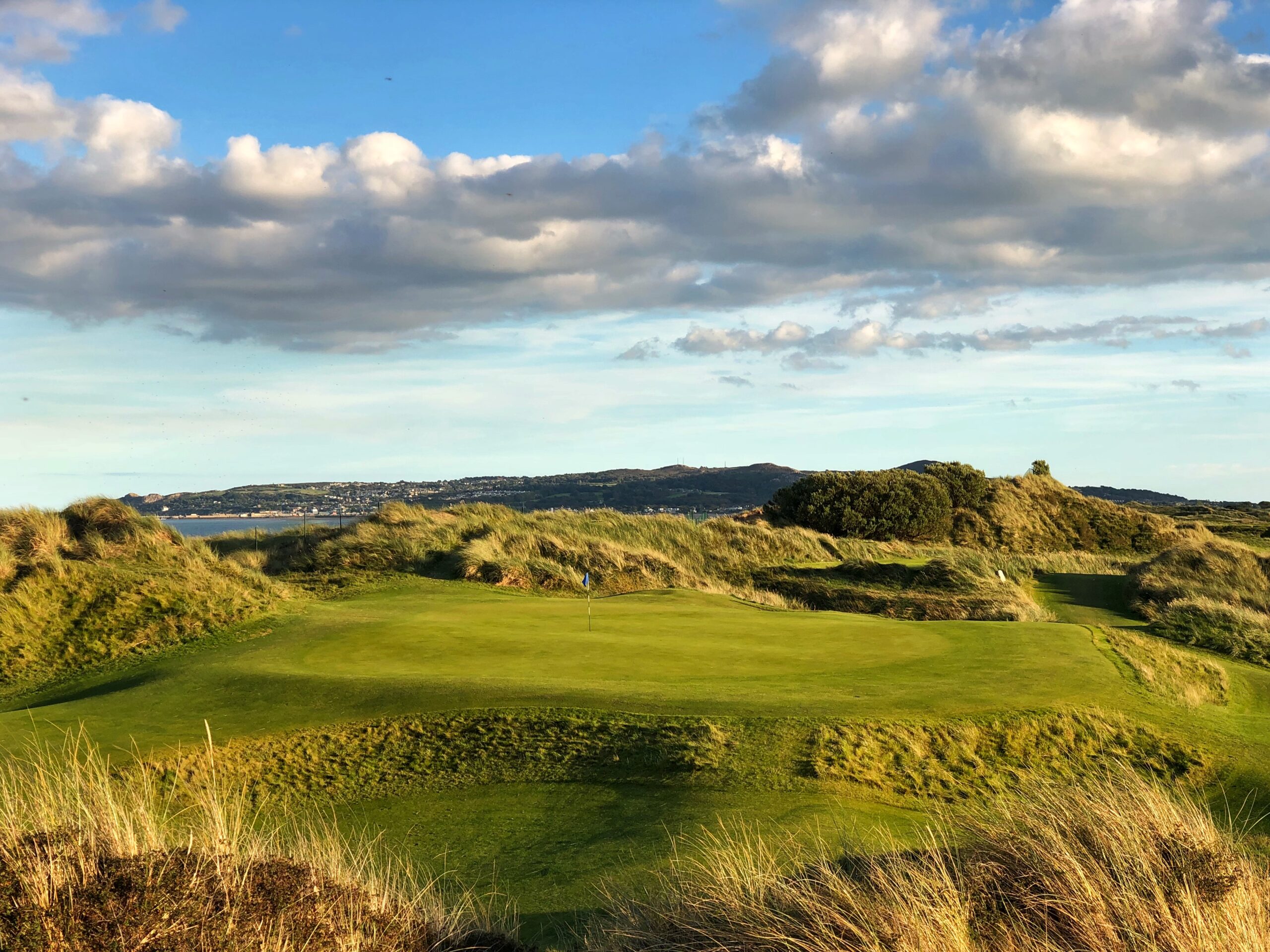
Built around the estate of the Jameson family (Irish whiskey), Portmarnock Links has an interesting routing plan which loops back and forth upon itself. The holes nearer the shore work their way through some impressive dunes, while the landward holes are generally less dramatic. Because the course is laid out the way it is, each nine has a series of holes in both types of terrain. The resulting variety is pleasing to the eye.
There are some good holes here. The short eighth, a 375 yard severe dog leg left is flanked on both sides by dunes, presents the golfer a choice: you can either cut off the corner and go over the dunes, straight at the green, or lay up short of the fairway bunker. The latter approach leaves you with a shot of a 100 yards or so into a narrow elevated green nestled nicely in the dunes. A clever hole this, and one which proves an old golf truism: if the hole is short, there is usually trouble lurking nearby. There are other good short par fours here, and the course requires some strategic thinking as well as solid shotmaking.
I also like the 17th, a longish par three (205 yards from the blues), which plays uphill to a green protected by a large bunker on the left, and a nasty pit on the right; the hole is also played into a generally prevailing southern breeze. I have witnessed some amazingly bad tee shots here. The 18th, a sturdy 440 yard hole playing along the shore back to the hotel, requires a long, accurate drive which must avoid a devilish fairway bunker in the landing area. The second shot is to a raised green, well protected by bunkers, and surrounded by dunes, which form a natural amphitheater, an impressive finishing hole.
Royal Dublin Golf Club
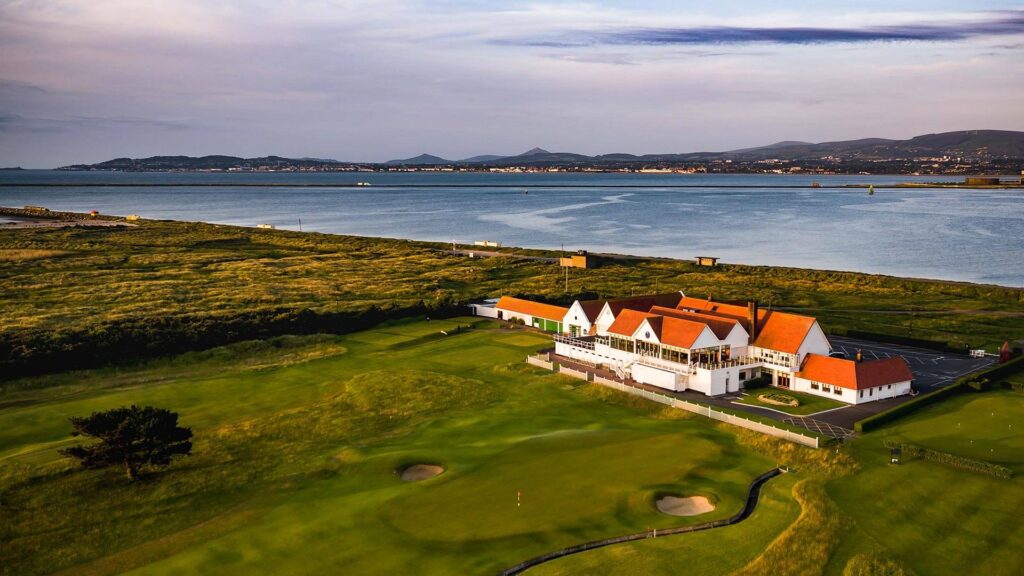
Like so many courses in Ireland and around the world, Royal Dublin Golf Club was founded by a group of expatriate Scotsmen. The Club began play on Ireland's first, but exceedingly modest 18 holes that were laid out in Phoenix Parkin 1885. Poor playing conditions led the club to move in 1888 to its present location on Bull Island in Dublin Bay. The original course was the design of two Club members and was used until the course was closed in 1914 so that the land could be devoted to the war effort. It was not reopened until 1921 following a complete redesign by H. S. Colt.
Royal Dublin is universally known for three distinctions: its land, its greens and its professional. The course owes its very existence to Capt. William Bligh of HMS Bounty fame as the land on which it rests results from deposits of sediment created by Bligh's change in Dublin harbor breakwaters when he was a naval engineer. The greens are among the largest in Ireland and immaculately conditioned. If a truer putting surface exists, I have not had the pleasure of playing it. The former professional is the legendary Irish golfer, Christy O’Connor, Sr.
The course is a traditional yet somewhat primitive links. The best-known holes are 15, 16 and 18. The 15th and 16th have the course's largest concentration of bunkering, some 19 in total. The 18th is a dogleg right with out of bounds on the right. It plays as a 5 par to mere mortals but a 4 par in championship play. Should one dare to fly the dogleg, one is rewarded with a not too difficult shot to reach the green in two.
Note to the reader: This post was originally penned in 2013 by our Founder & Chairman, Sam Baker.

Download Your Ultimate Guide to The Emerald Isle
The Complete Guide to
Ireland Golf Travel
What's covered in this free 40+ page guide:
- The best regions for golf in Ireland.
- Tips for making the most of your trip.
- Where to enjoy the Good Life between rounds.
- Lesser known courses you should play.
Plus links to over 50 additional guides and resources.
By downloading up you agree to receive marketing communications from Haversham & Baker and have read our privacy policy.
Additional Reading
Visit the Yardage Book for More Golf Travel Resources
Discover More of Golf at its Finest with H&B















